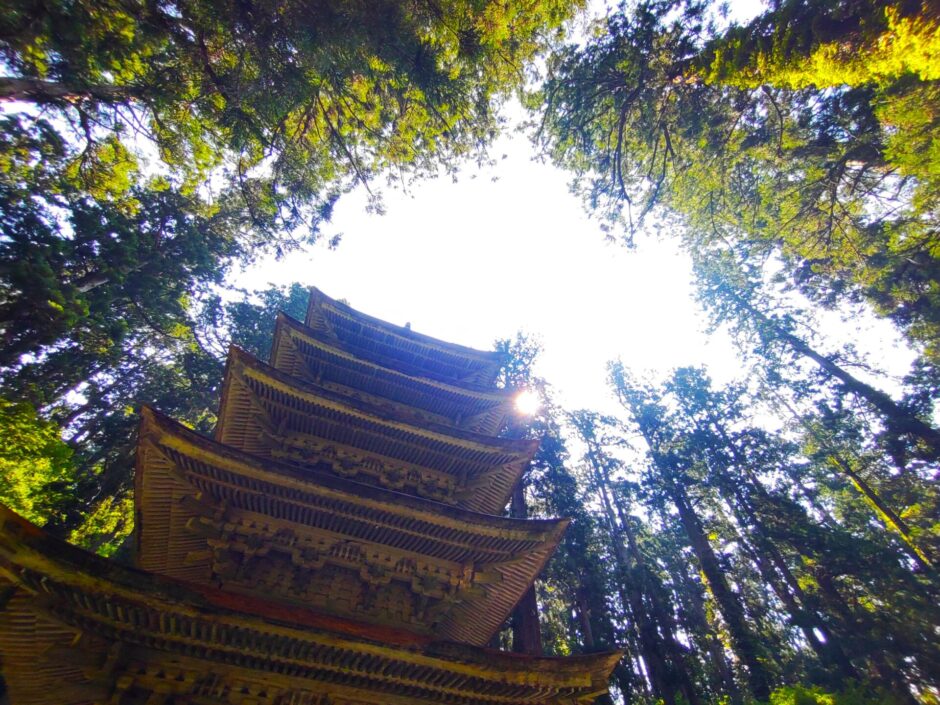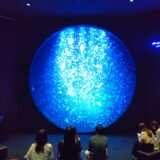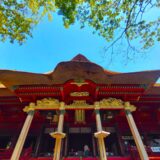目次
- 【Mount Haguro Dewa Sanzan Shrine Summary】
- 【Haguro Mountain Great Torii Gate】
- 【Mount Haguro Dewa Sanzan Shrine Front Torii Gate of Zuishin-mon】
- 【Mount Haguro Dewa Sanzan Shrine Tenchikon Shrine】
- 【Mount Haguro Dewa Sanzan Shrine Zuishin-mon】
- 【Mount Haguro Dewa Sanzan Shrine Cedar trees】
- 【Mount Haguro Dewa Sanzan Shrine subordinate shrine】
- 【Mount Haguro Dewa Sanzan Shrine Shinkyo Bridge】
- 【Mount Haguro Dewa Sanzan Shrine Suga Waterfall】
- 【Mount Haguro Dewa Sanzan Shrine old man cedar(Jijisugi)】
- 【Mount Haguro (Five-storied Pagoda)】
- 【Mount Haguro (Five-storied Pagoda) GOSHUIN】
- 【Mount Haguro Continued: To the Summit】
- 【Mount Haguro (Five-storied Pagoda) Nearby attractions】
- 【Mount Haguro (Five-storied Pagoda) Access】
- Manager’s Comments
- Mount Haguro (Five-storied Pagoda)
【Mount Haguro Dewa Sanzan Shrine Summary】
Dewa Sanzan Shrine is believed to have been founded around 593. Over 1,400 years ago, Prince Hachiko, the founder of Dewa Sanzan and son of the 32nd Emperor Sujun, unified the Dewa Sanzan mountains and established a shrine on the summit of Mount Haguro. It is said that ascending Mount Haguro, guided by the three-legged crow (Yatagarasu), led to the worship of the true form of the Holy Kannon Bodhisattva (Prince Nōjō) after rigorous training, thereby relieving people’s suffering.
The enshrined deities are Izanami-no-Mikoto and Inakura-no-Kami.
The pilgrimage sequence involves entering Mount Haguro, undergoing ascetic training at Mount Gassan, and achieving rebirth at Mount Yudono, embodying the meaning of “rebirth.”
【Haguro Mountain Great Torii Gate】
![Mount Haguro (Five-storied Pagoda) [Yamagata] DSC 2333 2 1024x769 - Mount Haguro (Five-storied Pagoda) [Yamagata]](https://japan-shrine.info/wp-content/uploads/DSC_2333-2-1024x769.jpg)
As the gateway to Mount Haguro, it stands approximately 23.8 meters tall and spans about 31.6 meters wide, making it the largest torii gate in the Tohoku region.
![Mount Haguro (Five-storied Pagoda) [Yamagata] DSC 2339 2 1024x768 - Mount Haguro (Five-storied Pagoda) [Yamagata]](https://japan-shrine.info/wp-content/uploads/DSC_2339-2-1024x768.jpg)
Even from afar, it catches the eye, radiating a powerful aura of being the “entrance to the sacred precincts.” Beyond this torii gate, the path ascends the slope known as Shinji-zaka, leading up to Mount Haguro.
![Mount Haguro (Five-storied Pagoda) [Yamagata] kumano hongu taisha oosaihara otorii jp1 160x160 - Mount Haguro (Five-storied Pagoda) [Yamagata]](https://japan-shrine.info/wp-content/uploads/kumano-hongu-taisha-oosaihara-otorii-jp1-160x160.jpg) Otorii, Oosaihara, sanctuaire Kumano Hongu Taisha [Wakayama].
Otorii, Oosaihara, sanctuaire Kumano Hongu Taisha [Wakayama].
It is believed to be around the 10th largest torii gate in Japan. Incidentally, the largest torii gate in Japan is the Ōharai Grand Torii in Wakayama Prefecture.
【Mount Haguro Dewa Sanzan Shrine Front Torii Gate of Zuishin-mon】
This is the entrance to the summit of Mount Haguro.
![Mount Haguro (Five-storied Pagoda) [Yamagata] DSC 2379 1024x768 - Mount Haguro (Five-storied Pagoda) [Yamagata]](https://japan-shrine.info/wp-content/uploads/DSC_2379-1024x768.jpg)
Passing through the torii gate, you’ll find the Suijinmon Shrine Office on your left, where you can receive goshuin stamps for the Five-storied Pagoda and Tenchikinsha Shrine.
【Mount Haguro Dewa Sanzan Shrine Tenchikon Shrine】
Tenchikō Shrine was founded in 1397 (the 4th year of the Ōei era). It is said to have been established by the head priest Hōshōin Sonryō. Located immediately to the right of the Suijin Gate, it is one of the branch shrines of Dewa Sanzan Shrine. The enshrined deity is Susanoo-no-Mikoto.
![Mount Haguro (Five-storied Pagoda) [Yamagata] DSC 2384 1024x768 - Mount Haguro (Five-storied Pagoda) [Yamagata]](https://japan-shrine.info/wp-content/uploads/DSC_2384-1024x768.jpg)
It was originally a temple called the Former Three Great Masters Hall. Its distinctive feature is the white square pillars supporting the eaves of the shrine’s approach hall; a rising dragon coils around the pillar on the right side facing the entrance, and a descending dragon coils around the pillar on the left.
【Mount Haguro Dewa Sanzan Shrine Zuishin-mon】
At the front stands the magnificent Suijin Gate, serving as the main entrance. This gate was donated in 1695 by Ikoma Sanuki-no-kami, lord of Yashima in Yuri District, praying for the prosperity of his family and entry into the Pure Land of Bliss.
![Mount Haguro (Five-storied Pagoda) [Yamagata] DSC 2344 1024x768 - Mount Haguro (Five-storied Pagoda) [Yamagata]](https://japan-shrine.info/wp-content/uploads/DSC_2344-1024x768.jpg)
Originally a gate enshrining the guardian deities of Buddhism, the Agyō and Ungyō Kongō Rikishi statues, it became the Dewa Sanzan Shrine during the Meiji Restoration’s separation of Shinto and Buddhism. It then enshrined warrior deities dressed in court robes and holding swords and bows and arrows, thus becoming known as the Suijin Gate (Suijinmon). Guardian deities called the Toyoishi-mado-gami and Kushiiishi-mado-gami, who prevented the intrusion of evil spirits, were also enshrined here.
【Mount Haguro Dewa Sanzan Shrine Cedar trees】
Beyond the Suijin Gate, a cedar avenue stretches onward. It is said to contain over 500 cedar trees aged 200 to 300 years, making it a rare cedar avenue even by national standards. It is currently designated as a National Natural Monument.
![Mount Haguro (Five-storied Pagoda) [Yamagata] DSC 2389 1024x768 - Mount Haguro (Five-storied Pagoda) [Yamagata]](https://japan-shrine.info/wp-content/uploads/DSC_2389-1024x768.jpg)
The atmosphere is similar to that of Kumano Shugendō (Kumano Kodo), a type of mountain Buddhism also rooted in nature worship.
![Mount Haguro (Five-storied Pagoda) [Yamagata] DSC 0463 160x160 - Mount Haguro (Five-storied Pagoda) [Yamagata]](https://japan-shrine.info/wp-content/uploads/DSC_0463-160x160.jpg) Kumano Nachi Taisya [Wakayama]
Kumano Nachi Taisya [Wakayama]
【Mount Haguro Dewa Sanzan Shrine subordinate shrine】
Descending the stone steps from the Suijin Gate, you will see the subsidiary shrine.
![Mount Haguro (Five-storied Pagoda) [Yamagata] DSC 2390 1024x768 - Mount Haguro (Five-storied Pagoda) [Yamagata]](https://japan-shrine.info/wp-content/uploads/DSC_2390-1024x768.jpg)
Iwamure Shrine, Nere Shrine, Isotake Shrine, Ōtoshi Shrine, Tenjin Shrine, Toyotamahime Shrine, and Hakusan Shrine are located here.
【Mount Haguro Dewa Sanzan Shrine Shinkyo Bridge】
After passing through the subsidiary shrines, the red “Shinkyo Bridge” spanning the Harai River comes into view.
![Mount Haguro (Five-storied Pagoda) [Yamagata] DSC 2391 1024x768 - Mount Haguro (Five-storied Pagoda) [Yamagata]](https://japan-shrine.info/wp-content/uploads/DSC_2391-1024x768.jpg)
This river originates from Mount Gassan, and it is said that in ancient times, pilgrims purified themselves in its waters. The current bridge is a relatively new structure, having been replaced in 2021 (Reiwa 3).
【Mount Haguro Dewa Sanzan Shrine Suga Waterfall】
As you cross Shinkyo Bridge, you’ll see a waterfall and a shrine on the opposite bank of the Harai River flowing on the right.
![Mount Haguro (Five-storied Pagoda) [Yamagata] DSC 2412 1 1024x768 - Mount Haguro (Five-storied Pagoda) [Yamagata]](https://japan-shrine.info/wp-content/uploads/DSC_2412-1-1024x768.jpg)
This waterfall is actually an artificial one, created during the Edo period by Tenyū Bettō, who diverted water from a stream at the foot of Mt. Gassan, about 8 km away. It was originally called Fudō Falls. Tenyū Bettō served as both the chief priest and administrator of Mount Haguro in the early Edo period, dedicating himself to reviving the mountain after its decline during the Warring States period.
![Mount Haguro (Five-storied Pagoda) [Yamagata] DSC 2395 1 1024x768 - Mount Haguro (Five-storied Pagoda) [Yamagata]](https://japan-shrine.info/wp-content/uploads/DSC_2395-1-1024x768.jpg)
The shrine on the right side of Suga Falls is Harai River Shrine.
【Mount Haguro Dewa Sanzan Shrine old man cedar(Jijisugi)】
Walking along the cedar avenue, just before the five-story pagoda stands the Old Man Cedar, the oldest cedar on Mount Haguro, with a tree age exceeding 1,000 years. The circumference at the base of this giant cedar is approximately 10.5 meters, the trunk circumference is about 8.25 meters, and its height reaches 43 meters. Together with the surrounding cedar avenue, it is now designated as a National Natural Monument.
![Mount Haguro (Five-storied Pagoda) [Yamagata] DSC 2397 1024x768 - Mount Haguro (Five-storied Pagoda) [Yamagata]](https://japan-shrine.info/wp-content/uploads/DSC_2397-1024x768.jpg)
Near the Old Man Cedar once stood a massive ancient cedar known as the Old Woman Cedar. These two trees were regarded as a married couple, believed to jointly protect Mount Haguro. However, in 1902 (Meiji 35), a powerful typhoon tragically toppled and killed the Old Woman Cedar. Today, only the Old Man Cedar stands alone.
【Mount Haguro (Five-storied Pagoda)】
Next to the old cedar tree stands a five-story pagoda.
![Mount Haguro (Five-storied Pagoda) [Yamagata] DSC 2410 1024x768 - Mount Haguro (Five-storied Pagoda) [Yamagata]](https://japan-shrine.info/wp-content/uploads/DSC_2410-1024x768.jpg)
Considered the oldest pagoda in the Tohoku region, it is said to have been founded by Taira no Masakado around 931–938. The present pagoda is believed to have been rebuilt approximately 600 years ago. Standing 29.0 meters tall, it is a three-bay, five-story structure with a cypress-bark roof and exposed wooden frame. It was designated a National Treasure in 1966 (Showa 41).
![Mount Haguro (Five-storied Pagoda) [Yamagata] DSC 2406 1024x768 - Mount Haguro (Five-storied Pagoda) [Yamagata]](https://japan-shrine.info/wp-content/uploads/DSC_2406-1024x768.jpg)
During the Edo period, it is believed that monks’ quarters and subsidiary temples existed around the pagoda, but most were demolished following the separation of Shinto and Buddhism after the Meiji Restoration. Today, only this pagoda remains, making it one of the few Buddhist-style structures on Mount Haguro.
![Mount Haguro (Five-storied Pagoda) [Yamagata] DSC 2402 1024x768 - Mount Haguro (Five-storied Pagoda) [Yamagata]](https://japan-shrine.info/wp-content/uploads/DSC_2402-1024x768.jpg)
While there are various theories, it’s said that Taira no Masakado founded it… He was active in the Kantō region, but perhaps he trained in Yamagata…
Masakado is enshrined at various shrines throughout Tokyo.
【Mount Haguro (Five-storied Pagoda) GOSHUIN】
![Mount Haguro (Five-storied Pagoda) [Yamagata] 2025 08 31 9 50 Office Lens 1024x759 - Mount Haguro (Five-storied Pagoda) [Yamagata]](https://japan-shrine.info/wp-content/uploads/2025_08_31-9_50-Office-Lens-1024x759.jpg)
Special Goshuin: 1,000 yen
【Mount Haguro Continued: To the Summit】
The rest of the article is below.
【Mount Haguro (Five-storied Pagoda) Nearby attractions】
Chidō Museum, Shōnai Shrine, Shōnai Domain School Chidōkan
【Mount Haguro (Five-storied Pagoda) Access】
Manager’s Comments
Though familiar from photographs, when this landscape appears before your eyes, its presence feels almost divine. The ancient cedar forest, including the Grandfather Cedar, is regarded as a dwelling place for the gods and is considered a significant manifestation of nature worship. The Grandfather Cedar, enduring for over a thousand years, stands as a living witness. It has watched over the countless ascetics and pilgrims who have passed through, conveying the profound history and faith of Mount Haguro to the present day. After this, taking the children and elderly to the summit would have been too strenuous, so we drove to the mountaintop.
33-14, Haguro-yama, Haguro-cho, Tsuruoka City, Yamagata Prefecture 997-0211
※Free parking available
 Tour of Japanese shrines and temples
Tour of Japanese shrines and temples 

![Mount Haguro (Five-storied Pagoda) [Yamagata] 2754815 m 520x300 - Mount Haguro (Five-storied Pagoda) [Yamagata]](https://japan-shrine.info/wp-content/uploads/2754815_m-520x300.jpg)
![Mount Haguro (Five-storied Pagoda) [Yamagata] DSC 1621 1 520x300 - Mount Haguro (Five-storied Pagoda) [Yamagata]](https://japan-shrine.info/wp-content/uploads/DSC_1621-1-520x300.jpg)
![Mount Haguro (Five-storied Pagoda) [Yamagata] DSC 1672 1 520x300 - Mount Haguro (Five-storied Pagoda) [Yamagata]](https://japan-shrine.info/wp-content/uploads/DSC_1672-1-520x300.jpg)
![Mount Haguro (Five-storied Pagoda) [Yamagata] DSC 0261 520x300 - Mount Haguro (Five-storied Pagoda) [Yamagata]](https://japan-shrine.info/wp-content/uploads/DSC_0261-520x300.jpg)
![Mount Haguro (Five-storied Pagoda) [Yamagata] DSC 2437 2 520x300 - Mount Haguro (Five-storied Pagoda) [Yamagata]](https://japan-shrine.info/wp-content/uploads/DSC_2437-2-520x300.jpg)
![Mount Haguro (Five-storied Pagoda) [Yamagata] DSC 2524 520x300 - Mount Haguro (Five-storied Pagoda) [Yamagata]](https://japan-shrine.info/wp-content/uploads/DSC_2524-520x300.jpg)
![Mount Haguro (Five-storied Pagoda) [Yamagata] DSC 2242 520x300 - Mount Haguro (Five-storied Pagoda) [Yamagata]](https://japan-shrine.info/wp-content/uploads/DSC_2242-520x300.jpg)
![Mount Haguro (Five-storied Pagoda) [Yamagata] DSC 2213 520x300 - Mount Haguro (Five-storied Pagoda) [Yamagata]](https://japan-shrine.info/wp-content/uploads/DSC_2213-520x300.jpg)
![Mount Haguro (Five-storied Pagoda) [Yamagata] DSC 2437 2 150x150 - Mount Haguro (Five-storied Pagoda) [Yamagata]](https://japan-shrine.info/wp-content/uploads/DSC_2437-2-150x150.jpg)
![Mount Haguro (Five-storied Pagoda) [Yamagata] 2754815 m 150x150 - Mount Haguro (Five-storied Pagoda) [Yamagata]](https://japan-shrine.info/wp-content/uploads/2754815_m-150x150.jpg)
![Mount Haguro (Five-storied Pagoda) [Yamagata] DSC 2242 150x150 - Mount Haguro (Five-storied Pagoda) [Yamagata]](https://japan-shrine.info/wp-content/uploads/DSC_2242-150x150.jpg)
![Mount Haguro (Five-storied Pagoda) [Yamagata] DSC 2168 2 150x150 - Mount Haguro (Five-storied Pagoda) [Yamagata]](https://japan-shrine.info/wp-content/uploads/DSC_2168_2-150x150.jpg)

